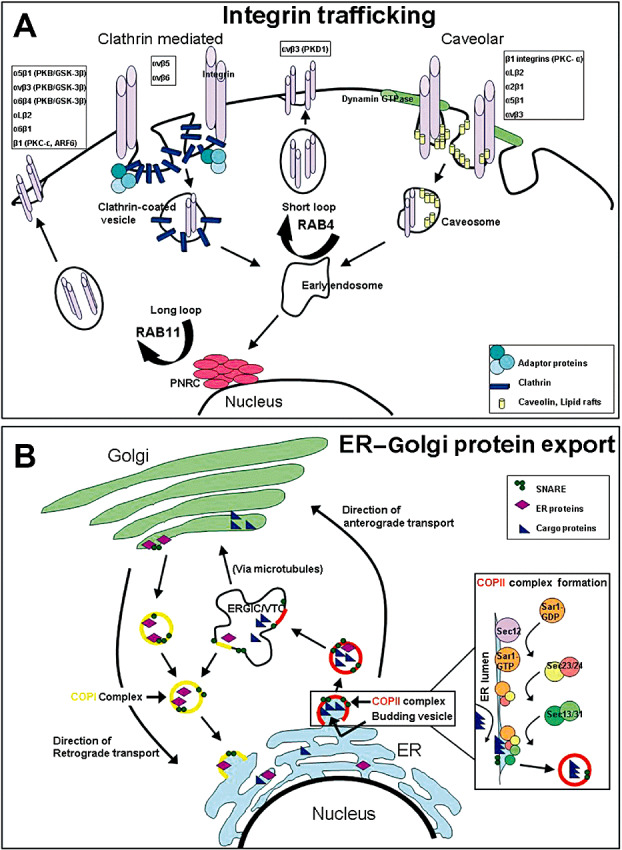Figure 4.

Integrin trafficking and endoplasmic reticulum (ER) to Golgi protein export pathways. A. Integrin trafficking depicting the two main pathways of internalization, clathrin‐mediated and caveolar, as well as the pathways for recycling. Clathrin‐mediated internalization utilizes clathrin coated pits, whereas caveolar internalization utilizes dynamin GTPase to form vesicles containing lipid rafts and caveolin protein. Recycling occurs through fusion to early endosomes and proceeds either via Rab4 signaling through a short loop pathway or via Rab11 signaling through a long loop pathway where proteins pass through the perinuclear recyling complex. Respective integrins and their trafficking mediators are listed above the suggested pathways that they utilize 9, 17, 19, 30, 31. B. ER to Golgi protein export depicting coat protein complex II (COPII)‐mediated anterograde transport and coat protein complex I (COPI)‐mediated retrograde transport between the ER and the Golgi complex. COPII assembly commences with Sar1 G‐protein activation by the Sec12 guanine nucleotide exchange factor, followed by the recruitment of the Sec23–24 heterodimer that recognizes ER export signals on cargo proteins for inclusion in vesicles. The Sar1‐Sec23–24 complex recruits the Sec13–31 heterodimer that facilitates final budding and vesicle formation from the ER. Vesicles proceed to the ER–Golgi intermediate compartment (ERGIC), which is also called vesicular tubular clusters (VTC), the complex of which transports proteins to the Golgi destination for eventual final export 15, 20, 23. GTP = guanosine‐5′‐triphosphate; SNARE = N‐ethylmaleimide‐sensitive fusion protein attachment protein receptor. PKC = protein kinase C.
